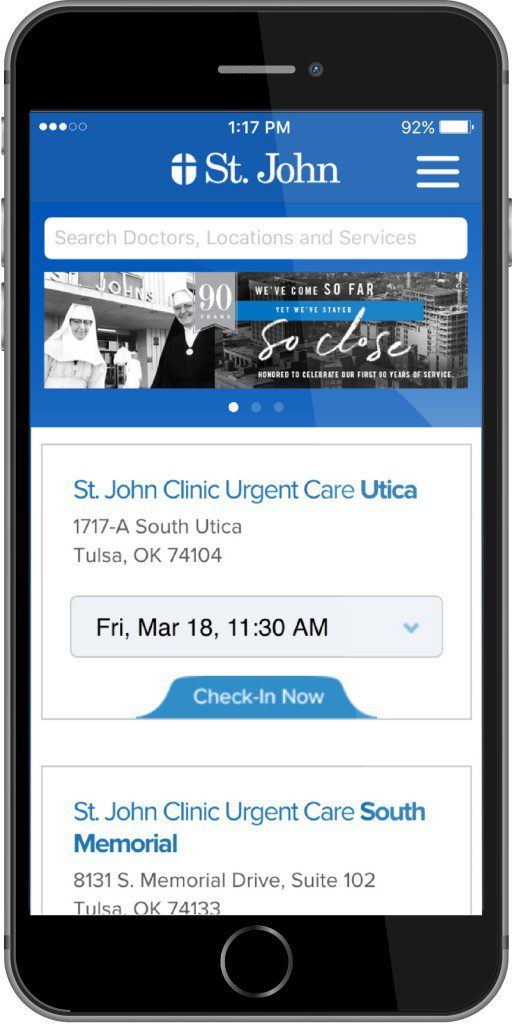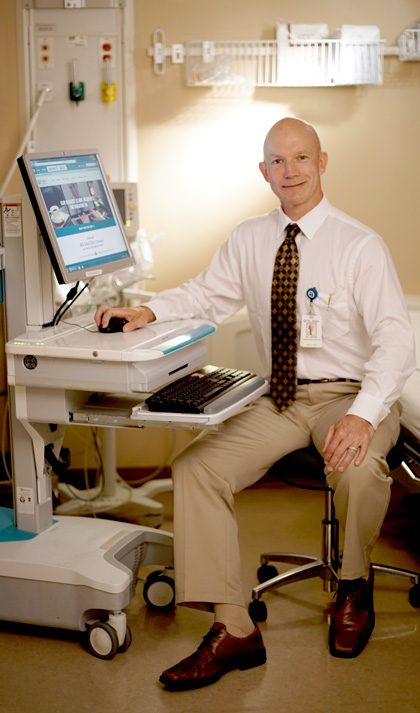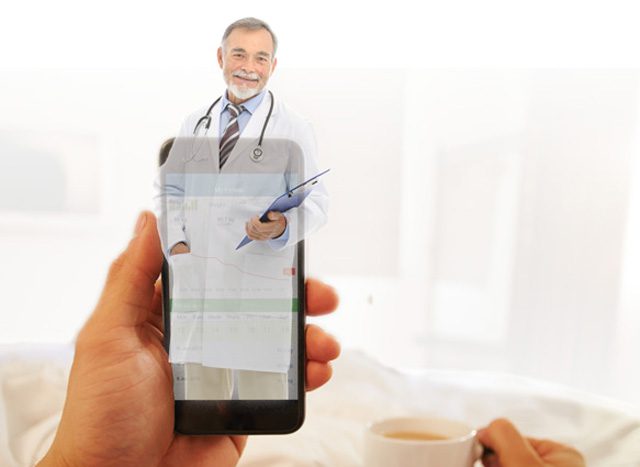
[dropcap]The[/dropcap] days of the home visit from your friendly local doctor are practically over. But what if they weren’t over, but had merely gone virtual? What if, through the use of technology, the sick and injured could be in almost immediate contact with a doctor at any time without leaving home or the office?
Telemedicine and technology grant this kind of access.
The American Telemedicine Association defines telemedicine as “the use of medical information exchanged from one site to another via electronic communications to improve a patient’s clinical health status.” The organization uses this term to describe a variety of remote types of health care. These can include everything from electronic health records to patient portals to rolling clinics on buses. But the overall goals and mission behind telemedicine remain the same: an effort to increase the accessibility and quality of health care for people who face barriers and challenges to receiving this care.
 “Historically there were little to no options after hours and/or [across] geographic barriers, which are a very real challenge for many people, but now, through the use of technology, we’re able to come to them at a time and place that they need,” says Dr. Jason Lepak, lead physician for virtual care in the St. John Health System.
“Historically there were little to no options after hours and/or [across] geographic barriers, which are a very real challenge for many people, but now, through the use of technology, we’re able to come to them at a time and place that they need,” says Dr. Jason Lepak, lead physician for virtual care in the St. John Health System.
The ubiquity of smartphones and access to the internet have paved the way for new options when visiting the doctor.
Just this summer, St. John Health System in Tulsa introduced its OnDemand virtual doctor’s office visits. Through this program, patients with minor illnesses and injuries can address their needs day or night on any date. The process typically takes 30 minutes or less, and patients don’t have to leave the comfort of their homes or the convenience of their offices.
“Why [St. John OnDemand] is beneficial for the patient is that they can have a doctor’s visit in real time, wherever and whenever they need it. So, it increases access 24/7/365 days a year,” Lepak says.
This convenience can have major results, as INTEGRIS Health in Oklahoma City has seen. INTEGRIS launched a Virtual Visit option in February 2015. Since then, more than 2,600 online visits have been conducted and have received a customer satisfaction rating of 94 percent, according to Dr. Pamela Forducey, system director at INTEGRIS eHealth. The Virtual Visit allows anyone to access a primary-care health professional from anywhere. “The consumer is connected to this professional, on average, within 14 minutes of requesting the service,” Forducey says.
Both the St. John and INTEGRIS programs are intended for patients with minor illnesses or injuries, not major medical emergencies. During the online visit, the health care provider will determine if the patient should be seen in person. “St. John Clinic OnDemand providers will determine within the first three minutes of a virtual medical visit if the patient’s condition would be better treated at a nearby medical facility,” says Joy McGill, a St. John Health System spokeswoman.
The benefits to patients of these types of programs include an increased level of convenience. “Patients wouldn’t have to leave work and wait on the doctor and therefore may be more productive,” says Dr. Jeffrey Cruzan, medical director for INTEGRIS Health Partners, and managing director and chief physician executive at INTEGRIS Medical Group.
For many at home or work, being treated by an online health care provider goes beyond simple convenience.
Telemedicine can serve populations with barriers to receiving health care, such as those who live in rural areas far from doctors and hospitals, those who lack transportation, and those who need to spend as little time as possible away from work and school. “Telemedicine solutions enable consumers to receive more timely access to care in their own community versus having to drive long distances for medical specialists,” Forducey says.

As with anything new, these options are not without challenges. Some may question the validity of a telemedical exam and feel there is a lack of a personal touch to a doctor’s office that they visit online, Cruzan says. Also, some doctors have been slower to adopt these new methods of sharing information and communicating with patients over the last decade due to a lack of awareness and understanding, Forducey says.
Visits to virtual doctors’ offices aren’t the only way that Oklahoma health providers use technology to provide patients with improved service. INTEGRIS uses telemedicine to serve individuals with complex medical issues and save those patients from long-distance travel. INTEGRIS has established a Mayo Clinic Care Network affiliation to allow for “a physician-to-physician eConsult, where INTEGRIS Health physicians can access an electronic consultation, referred to as eConsult, with a Mayo subject matter expert,” Forducey says.
INTEGRIS has also established the TeleStroke Network of Oklahoma to make the most of vital moments in potential stroke situations. This network allows rural hospitals access to consultations from expert neurologists when patients come to emergency rooms with stroke-like symptoms.
St. John Health System has introduced several options with technology in recent months. The St. John smart phone application allows patients to have access to medical information at their fingertips – literally. App users can get onto the St. John patient portal, look up symptoms for common health and injury concerns, find resources in their area and book a reservation at St. John Urgent Care centers, says Joy McGill, St. John Health System spokeswoman. This allows patients to wait at home instead of at the clinic. They can trade the waiting room for the living room, Lepak says.
No matter what form it comes in, the mission of telemedicine is to break down the barriers to quality health care that exist for many people. Whether the challenge involves time, place or people, many Oklahoma health providers are finding ways to use technology to provide the best possible care to everyone.























